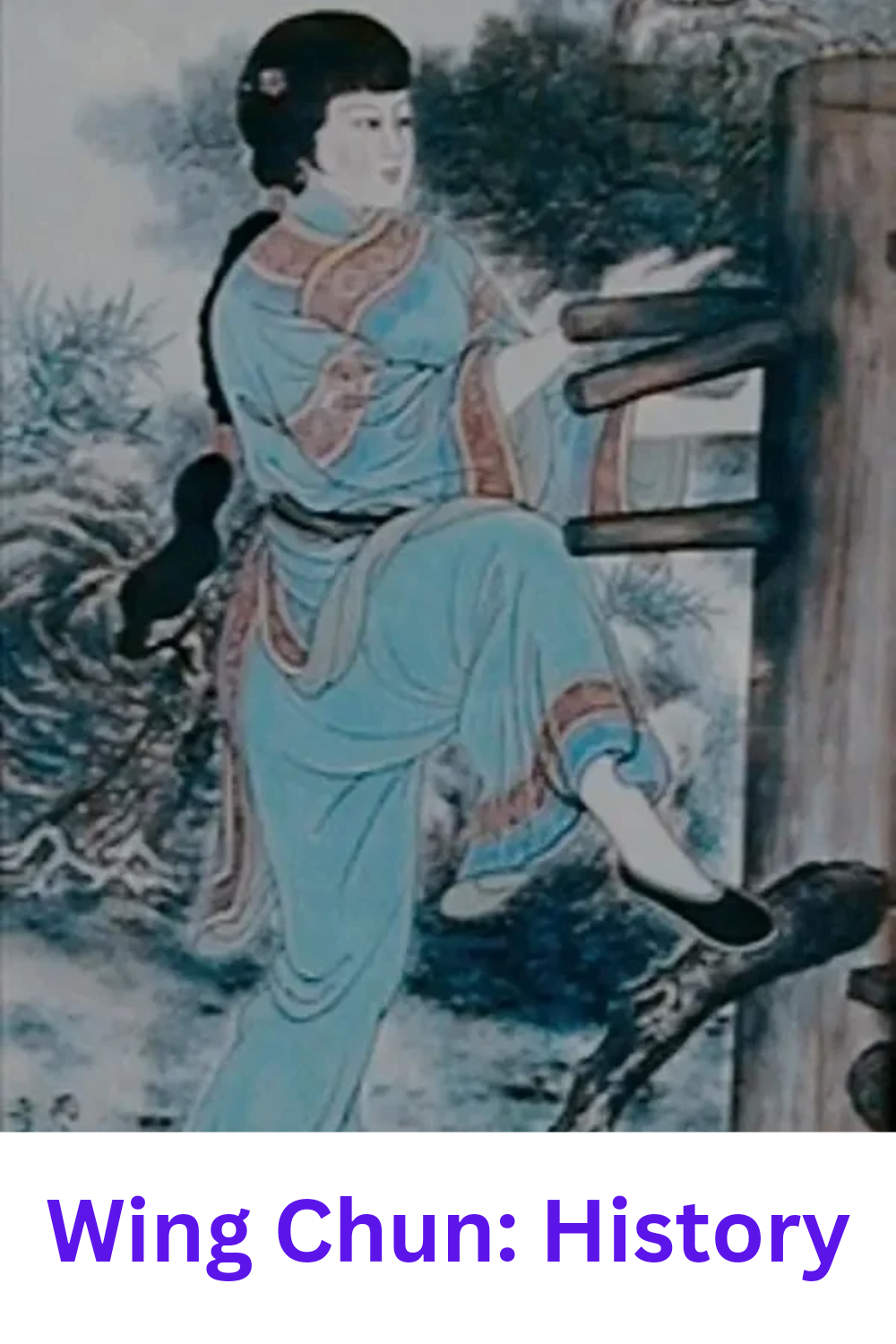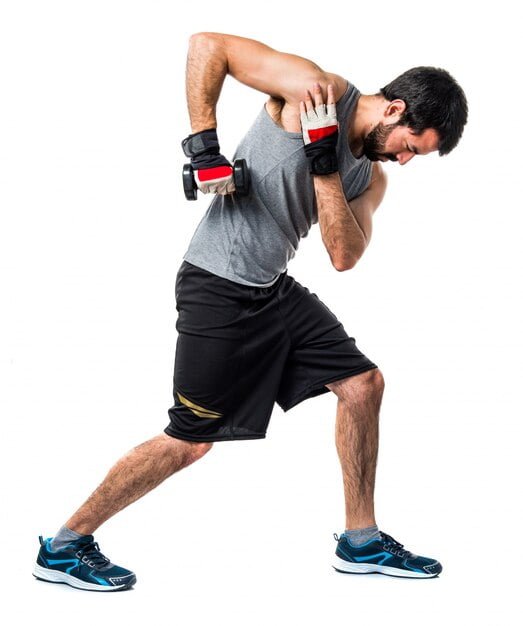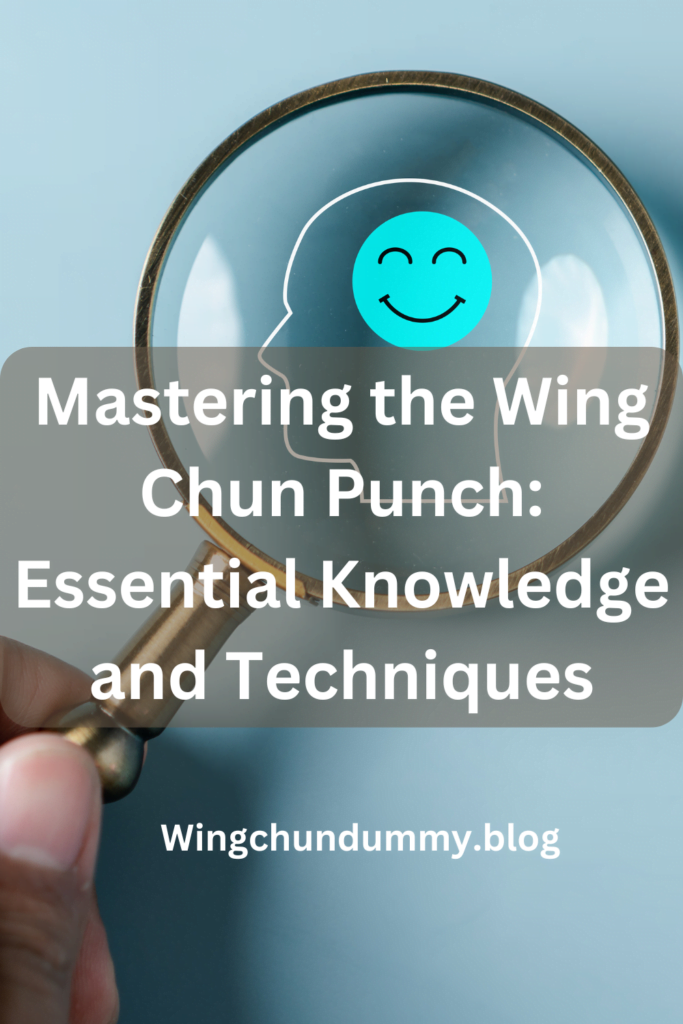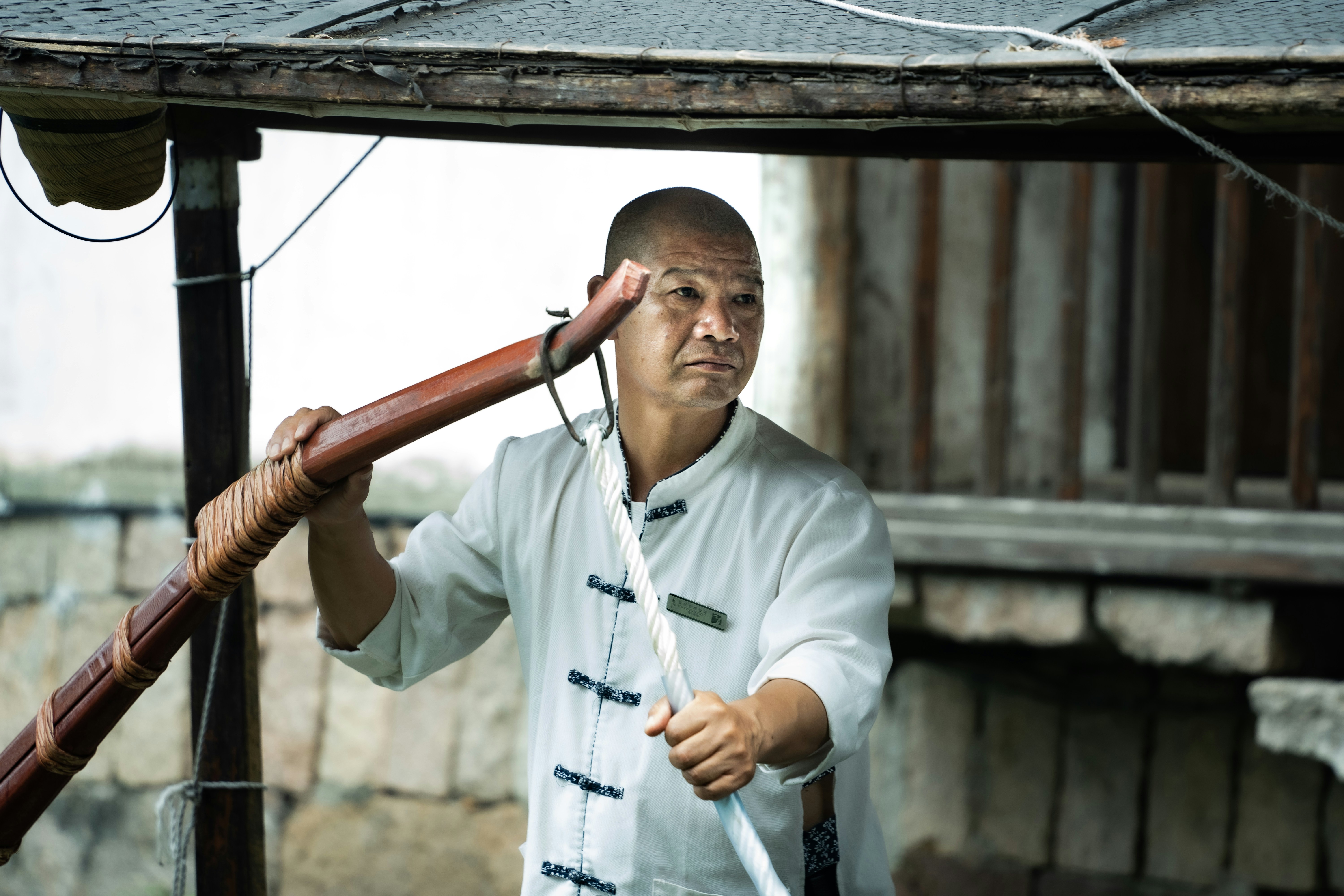Wing Chun, a traditional Chinese martial art, has gained recognition for its unique approach to close-range combat.
Originating from the Southern Shaolin Monastery, Wing Chun is designed to be efficient and direct, enabling practitioners to neutralize opponents swiftly.
One of the most distinctive techniques within this martial art is the Wing Chun punch, also referred to as the ‘straight punch’ or ‘chain punch.’
The Wing Chun punch is central to the system’s philosophy and practice.
Unlike punches in other martial arts, which often rely on the power generated from the hip or shoulder.
The Wing Chun punch emphasizes speed, precision, and continuous motion.
This technique is characterized by its straight-line trajectory, minimal telegraphing.
And the ability to deliver multiple punches in rapid succession, hence the term ‘chain punch.’
In the context of Wing Chun, the punch is not merely an offensive tool but a fundamental element of its defensive strategy.
The straight punch is designed to follow the shortest path to the target.
Thereby maximizing efficiency and reducing the opportunity for the opponent to counter.
This direct approach is reflective of Wing Chun’s broader principles, which prioritize economy of movement and effective energy use.
Furthermore, the Wing Chun punch is integrated with the practitioner’s overall body mechanics.
Ensuring that each punch is supported by the body’s structure rather than relying solely on muscular strength.
This integration allows for sustained attacks without quickly exhausting the practitioner, an essential aspect of the Wing Chun fighting strategy.
The unique characteristics of the Wing Chun punch set it apart from other martial arts techniques, making it a cornerstone of Wing Chun training.
Its emphasis on speed, directness, and structural efficiency not only defines the punch itself but also encapsulates the essence of Wing Chun as a martial art.
As we delve deeper into the techniques and applications of the Wing Chun punch,
its significance within the system will become increasingly apparent.
History and Evolution of the Wing Chun Punch

The Wing Chun punch, often referred to as the straight punch or “chain punch,” is a cornerstone of the Wing Chun martial arts system.
Its origins are deeply rooted in the rich history of Chinese martial arts, specifically in the Southern Shaolin tradition.
The legend of Wing Chun begins with Yim Wing Chun, a young woman who learned the art from a Buddhist nun named Ng Mui.

Yim Wing Chun later developed and refined the techniques, including the iconic punch, which became the foundation of the Wing Chun system.
The Wing Chun punch gained widespread recognition through the efforts of Grandmaster Ip Man.
Who played a pivotal role in popularizing Wing Chun in the 20th century.
Ip Man’s teachings emphasized the importance of speed, precision, and efficiency, all of which are embodied in the Wing Chun punch.
His most famous student, Bruce Lee, further propelled the technique into the global spotlight, integrating elements of Wing Chun into his own martial arts philosophy, Jeet Kune Do.
Over the years, the Wing Chun punch has evolved, adapting to modern training methods while preserving its core principles.
The technique focuses on direct, linear strikes aimed at the opponent’s centerline, maximizing impact while minimizing energy expenditure.
This efficient approach has made the Wing Chun punch a valuable tool not only in traditional martial arts but also in modern self-defense and combat sports.
Today, the Wing Chun punch continues to be a fundamental aspect of Wing Chun training, influencing various martial arts disciplines worldwide.
Its emphasis on structure, timing, and accuracy makes it a versatile and effective technique, demonstrating the enduring legacy of Wing Chun’s founders.
As practitioners continue to adapt and refine the punch, it remains a testament to the timeless principles of Wing Chun.
The Science Behind the Wing Chun Punch
The effectiveness of the Wing Chun punch lies in its meticulous adherence to biomechanics and physics.
Central to this martial arts technique is the principle of optimal body alignment.
which ensures that every movement is executed with maximum efficiency and minimal effort.
Proper alignment involves maintaining a straight posture, where the spine remains erect and the shoulders relaxed.
Allowing for a seamless transfer of force from the ground through the body and into the punch.
Another fundamental aspect is the centerline theory.
This principle emphasizes the importance of protecting and attacking along the central axis of the body.
By focusing on this imaginary line that runs vertically through the center of the body.
practitioners can streamline their movements, reducing unnecessary motion and increasing the speed and directness of their strikes.
The centerline theory not only enhances offensive capabilities but also bolsters defensive tactics by minimizing exposure to the opponent’s attacks.
Generating power in the Wing Chun punch is largely attributed to the efficient use of kinetic energy.
Unlike other striking techniques that rely heavily on muscular strength and exaggerated movements, the Wing Chun punch harnesses the body’s natural kinetic chain.
This involves a coordinated effort of the legs, hips, and upper body, creating a whip-like effect that culminates in a powerful, focused strike.
The concept of kinetic energy in Wing Chun is akin to the principles observed in physics.
Where the efficient transfer of energy results in greater impact with less exertion.
By understanding and applying these scientific principles, practitioners of Wing Chun can achieve a punch that is both rapid and powerful, making it a formidable technique in close-quarters combat.
The synergy of body alignment, centerline theory, and kinetic energy not only maximizes the punch’s effectiveness but also underscores the intricate balance between art and science in martial arts.
Proper Stance and Alignment
In Wing Chun, the effectiveness of a punch is deeply rooted in the proper stance and alignment.
The correct stance ensures that the practitioner maintains balance, stability, and readiness for both offensive and defensive maneuvers.
An integral component of the Wing Chun stance is the Yee Jee Kim Yeung Ma, or the “Character Two Adduction Stance.”
This stance forms the foundation for powerful and efficient Wing Chun punches.

To assume the Yee Jee Kim Yeung Ma stance, start by standing with your feet shoulder-width apart.
Turn your toes inward slightly so that they point towards each other, forming a pigeon-toed position.
Bend your knees slightly, ensuring that they align with your toes, and sink your weight evenly through both legs.
This balanced distribution of weight is crucial for maintaining stability and readiness for quick movements.
Foot positioning is another critical aspect of the Wing Chun stance.
The heels should be slightly raised, with the weight of the body resting on the balls of the feet.
This positioning allows for swift and agile movements, enabling the practitioner to respond effectively to both offensive and defensive situations.
Additionally, keeping the knees slightly bent provides a spring-like effect, which is essential for generating force in the punches.

Body alignment plays a pivotal role in executing effective Wing Chun punches.
Ensure that your spine is straight, and your head is held upright.
The shoulders should be relaxed, and the chest slightly sunk, allowing for a more natural and fluid motion.
Proper alignment of the upper body ensures that the force generated from the legs and hips is transmitted efficiently through the arms and into the punch.
Maintaining stability in the Wing Chun stance requires continuous practice and mindfulness.
Regularly check your posture, foot positioning, and body alignment to ensure that you are executing the stance correctly.
Practicing in front of a mirror or under the guidance of an experienced instructor can be immensely beneficial in mastering the proper stance and alignment for an effective Wing Chun punch.
Basic Techniques and Drills
Mastering the Wing Chun punch requires a solid understanding of its basic techniques and consistent practice through various drills.
The Wing Chun punch, also known as the “straight punch” or “chain punch,” is a fundamental technique that emphasizes efficiency, directness, and speed.
To perform it correctly, one must pay attention to stance, alignment, and the mechanics of the punch itself.
Begin by adopting the proper stance, known as the Yee Jee Kim Yeung Ma.
Stand with your feet shoulder-width apart, knees slightly bent, and weight evenly distributed.
Your back should be straight, and your chin tucked slightly to protect your neck.
This stance provides stability and balance, essential for generating power in your punches.
Next, focus on the punch’s mechanics. Start with your hands in the centerline, elbows bent, and fists positioned just below your chin.
As you execute the punch, extend your arm straight forward, keeping your elbow close to your body.
The punch should travel along the centerline, with your fist rotating so that the knuckles point upward at the moment of impact.
This rotation ensures that your punch is both powerful and accurate.
To develop speed and accuracy, practice the chain punch drill.
Begin by throwing rapid, successive punches from the centerline, alternating hands.
Aim for a smooth, fluid motion, ensuring that each punch follows the previous one without interruption.
Start slowly to focus on form and gradually increase your speed as you become more comfortable with the technique.
Another effective drill is the wall bag training.
Fill a sturdy bag with sand or beans and mount it at chest height.
Practice your punches on the bag, concentrating on proper form and alignment.
This drill helps build the necessary power and conditioning in your arms and shoulders.
Additionally, it provides immediate feedback on the accuracy and force of your punches.
Incorporate these basic techniques and drills into your regular training routine to master the Wing Chun punch.
Consistent practice will enhance your speed, accuracy, and power, laying a strong foundation for more advanced techniques in the future.
Common Mistakes and How to Avoid Them
When learning the Wing Chun punch, practitioners often encounter several common pitfalls that can hinder their progress and effectiveness.
Addressing these errors early on is crucial for mastering this martial arts technique.
One frequent mistake is improper alignment of the fist and wrist.
Ensuring that the wrist is straight and the fist aligns with the forearm is essential to avoid injury and maximize power.
To correct this, focus on maintaining a firm yet relaxed wrist and check your alignment in a mirror regularly during practice.
Another prevalent error is neglecting the role of body mechanics.
Many beginners rely too much on arm strength, neglecting the power generated from the whole body.
Proper execution of the Wing Chun punch involves the coordinated movement of the hips, shoulders, and legs.
To improve, practitioners should concentrate on integrating these body parts into their punching technique.
Practicing slow, deliberate movements can help internalize this coordination, leading to more powerful and efficient punches.
Additionally, some learners fail to maintain a proper stance, which can compromise balance and stability.
The Wing Chun stance, with its rooted yet flexible positioning, is foundational to an effective punch.
Avoid common stance errors by keeping your feet shoulder-width apart, knees slightly bent, and weight evenly distributed.
Regularly revisiting and refining your stance during training sessions will enhance your overall technique.
Breathing is another aspect often overlooked.
Holding one’s breath or breathing inconsistently can negatively impact performance and endurance.
Practitioners should develop a consistent breathing rhythm, synchronizing breaths with movements.
Exhaling sharply during the punch can improve focus and power.
Lastly, impatience is a common obstacle.
Mastery of the Wing Chun punch requires time and persistent effort.
Rushing through techniques or skipping foundational drills can lead to ingrained bad habits.
Dedicate time to repetitive practice and seek feedback from experienced instructors to continually refine your technique.
By recognizing and addressing these common mistakes, practitioners can develop a more effective and refined Wing Chun punch, ultimately enhancing their martial arts proficiency.
Advanced Applications and Combinations
Building upon a solid foundation of basic techniques.
The advanced applications and combinations of the Wing Chun punch offer practitioners a deeper understanding of its versatility and effectiveness in real-world combat scenarios.
Mastery of the Wing Chun punch allows for seamless integration into various forms.
enhancing both defensive and offensive capabilities.
A critical aspect of advanced Wing Chun is the ability to execute combinations fluidly.
This involves linking the Wing Chun punch with other fundamental techniques, such as the Pak Sau (slapping hand).
Tan Sau (palm-up hand), and Bong Sau (wing arm).
For instance, a practitioner might use Pak Sau to deflect an incoming strike while simultaneously delivering a quick Wing Chun punch.
followed by a Tan Sau to control the opponent’s arm, creating openings for subsequent strikes.
Incorporating the Wing Chun punch into sparring sessions requires an understanding of timing, distance, and positioning.
Practitioners must develop the ability to read their opponent’s movements.
Allowing them to anticipate attacks and respond with appropriate counters.
This often involves using footwork to maintain optimal striking distance.
Ensuring that each punch lands with maximum efficiency and power.
Another crucial element of advanced Wing Chun is the concept of simultaneous attack and defense.
This principle is exemplified in the Chi Sau (sticky hands) drill, where practitioners maintain constant contact with their opponent’s arms.
using tactile feedback to control and counter movements.
By incorporating the Wing Chun punch into Chi Sau practice.
practitioners learn to deliver effective strikes while maintaining a strong defensive posture.
Wing Chun practitioners also benefit from integrating the punch into various forms, such as the Siu Nim Tau and Chum Kiu.
These forms provide structured sequences that emphasize proper technique and body mechanics.
allowing practitioners to refine their skills and develop muscle memory.
By consistently practicing these forms, one can ensure that the Wing Chun punch becomes an instinctive part of their combat repertoire.
Ultimately, the advanced applications and combinations of the Wing Chun punch are crucial for any practitioner seeking to elevate their martial arts proficiency.
Through diligent practice and understanding of these techniques.
one can achieve a higher level of combat effectiveness and adaptability.
Training Tools and Resources
For practitioners aiming to refine their Wing Chun punch, the right training tools and resources are indispensable.
Equipment such as punching bags and wooden dummies are pivotal in honing technique and building strength.
A heavy punching bag, for instance, provides resistance that helps in developing power and precision.
Punching bags come in various shapes and sizes.
but a standard heavy bag is ideal for practicing the straight punches and chain punches characteristic of Wing Chun.
The wooden dummy, or Muk Yan Jong, is another essential tool that aids in perfecting form and structure.
This apparatus allows practitioners to simulate combat scenarios.
Enhancing their ability to deliver effective punches while maintaining proper distance and positioning.
The wooden dummy’s unique design with arms and legs provides a realistic training experience, crucial for mastering angles and deflection techniques.
In addition to physical equipment, instructional resources play a critical role in advancing one’s skills.
Books written by renowned Wing Chun masters offer in-depth knowledge on the theory and application of the Wing Chun punch.
Titles such as “Wing Chun Kung Fu: Traditional Chinese Kung Fu for Self-Defense and Health” by Ip Chun and Michael Tse are highly recommended.
These books not only cover fundamental techniques but also delve into the philosophy behind the martial art.
Videos and online courses provide visual and interactive methods for learning.
Platforms like YouTube host numerous instructional videos that demonstrate the intricacies of the Wing Chun punch.
Moreover, dedicated online courses offer structured learning paths.
often featuring comprehensive modules and personalized feedback from experienced instructors.
Websites like WingChunOnline.com provide extensive libraries of video lessons that cater to both beginners and advanced practitioners.
Utilizing a combination of these training tools and resources ensures a well-rounded approach to mastering the Wing Chun punch.
By integrating physical practice with theoretical knowledge.
practitioners can significantly enhance their proficiency and efficacy in this traditional martial art.






